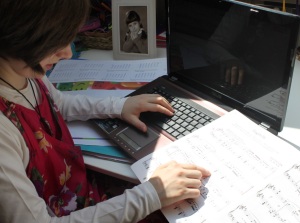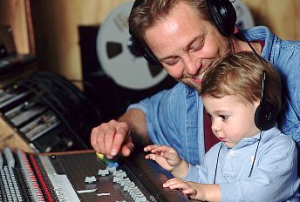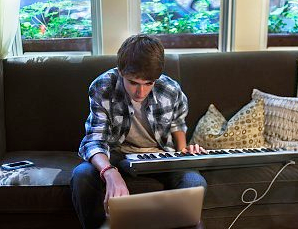User experience in the field of music software
The words ‘user experience’ refer to musical, social, psychological and cultural processes. These ones are the main aspects of the user experience.
The user of a product is here to experience it, it is his/her wish and he/she knows it. In the case of music software, it simple means that people learn music because there is value in the process (like source of revenue, prestige, well-being, etc).
They use a software because the software offers automated tools which help them in matter of music knowledge acquisition and practice. It is as simple as that.
UX is related to psychological processes. In the case of music software, it is because new media technologies have created new territories, spaces and affects (emotion, relationships, and so on).
Finally user experience includes cultural processes. In a high-quality music software, it appears when you open a program and discover 20 sheet music models which can help you to learn 20 music styles (it is the case in Pizzicato music composition and notation software – that you can discover at http://www.arpegemusic.com).
Pizzicato music composition and notation software user experience
What could I write about our clients UX that they did not say? I let them speak about their passion for Pizzicato music composition and notation software. After that, I will give you URLs
I just reproduce 5 testimonials found between countless positive ones amongst our 13 000+ unique users:
Philip Thomas (East Dummerston, VT, United States) – Lead music engraver Oxford University Press, New York Office, 1999-2005. Currently working as a freelance engraver for the finest classical music publishers in the U.S. and Europe
“I have used the Pizzicato program for a number of years now for its extensive composition environment which I find to be incredibly fast and intuitive to work in. My flute quartet “The Wissahickon at Dusk,” which recently premiered on Maine Public Radio in the U.S., was created using Pizzicato. I enthusiastically and whole-heartedly recommend this brilliant program.
Anyone looking for affordable music notation software will find that Pizzicato has powerful and comprehensive features. But what really sets Pizzicato apart is its vast array of compostion tools which are simple to use yet profound in scope and depth. Dominique Vandenneucker has designed a brilliant program which is sure to grow in stature and popularity as more users around the world spread the word about this remarkable software.”
Blair Ashby (Denver, Colorado, United States) – Music producer and sound engineer
“I like that Pizzicato is so different from a midi sequencer that it makes me think different about music and my compositions. Thank you, I think Pizzicato will help me get to the next level. I finished composing three different CDs in December and realized I was bored with my musical style so I started looking for a program which would make me think different. I am glad I purchased yours. On Friday last week a small record label asked me for three songs and I am going to try to do the foundation work in Pizzicato.”
Zlatoje Pajcic (Hamburg, Germany) – Music composer and publisher
Pizzicato is the most modern software for: scorewriting, composing, music editing, music processing, experimenting, chord recognition, generating the score based on chord recognition and using the custom libraries, easy combining of several scores to play together on the same chord progression, very big scores with unlimited number of staves, playing ornaments and grace note, graphical editors, work with many documents at the same time, very good manual, very accurate MIDI, up to sixteen MIDI in/outs supported and much more… »
Laurent Haye (Brussels, The Heart of Europe), Coordinator at the Royal Conservatory of Music
“I use Pizzicato every day. It is an excellent tool for all musicians from the amateur to the professional. It is mainly in the domains of sheet music publishing and creation of music files that I know this program, but I am always surprised by the power of the other tools offered to the user. Honestly I just could not do without it. And thank you to Dominique who always listens to his “Pizzicatists” so that the software is developed on the basis of the requests and interests of everyone.”
Mona Lei (Switzerland, Geneva) – Composer, certified music teacher (music theory, harmony, counterpoint, etc.) educated at the Music Conservatory of Bucarest.
“While searching for a music notation software to transcribe the manuscript of one of my classical compositions, I was informed about the existence of the website http://www.arpegemusic.com, by a friend working in computers. For my first experimentations with Pizzicato I realized that it had a lot of qualities: fast access to music writing technique, practical aspect of this technique, easy to use and in the same time a real possibility to exploit musical richness.
Really, what I immediately appreciated (compared to other softwares I used before) was the natural of Pizzicato. It was like using a paper music sheet, a pencil and an eraser. The big advantage is that the further I advance in my creation, the further I can modify the structure of my work, adding or erasing measures, staves, pages, instruments, etc. I have total freedom and I feel grateful to Pizzicato for that.
Now I work without keyboard, because I compose by playing piano. Then, I transcribe and listen to the result on the computer with Pizzicato. Using this technique I recently wrote the cantate “To Jean-Sébastien” (18 minutes), a work which was interpreted in Zürich under the aegis of UNICEF by the Zürich Great Orchestra. »
Do you want to make your own opinion ? Because all our customers have their own specific course, research, wants. I would not like to reduce Pizzicato music composition and notation software as some elitist tool reserved for academics, professionals and early musicians.
I read so many mails which come from so many different personalities and situations. Their relationships with music are for many of them as their relationships with clothes, food, air, heart: in one word, essential and unique.
To test Pizzicato, the fastest way is to download the free demonstration version at http://www.arpegemusic.com/demo1.htm On our website http://www.arpegemusic.com, you will also find the complete user guides for our 13 products, more than hundred newsletters around music composition (theory/computing), dozens of tutorials, all for free.
Musically,
Francoise Delsaux
Arpege Music
Online Marketing
Do you appreciate? Please share with your friends.























You must be logged in to post a comment.